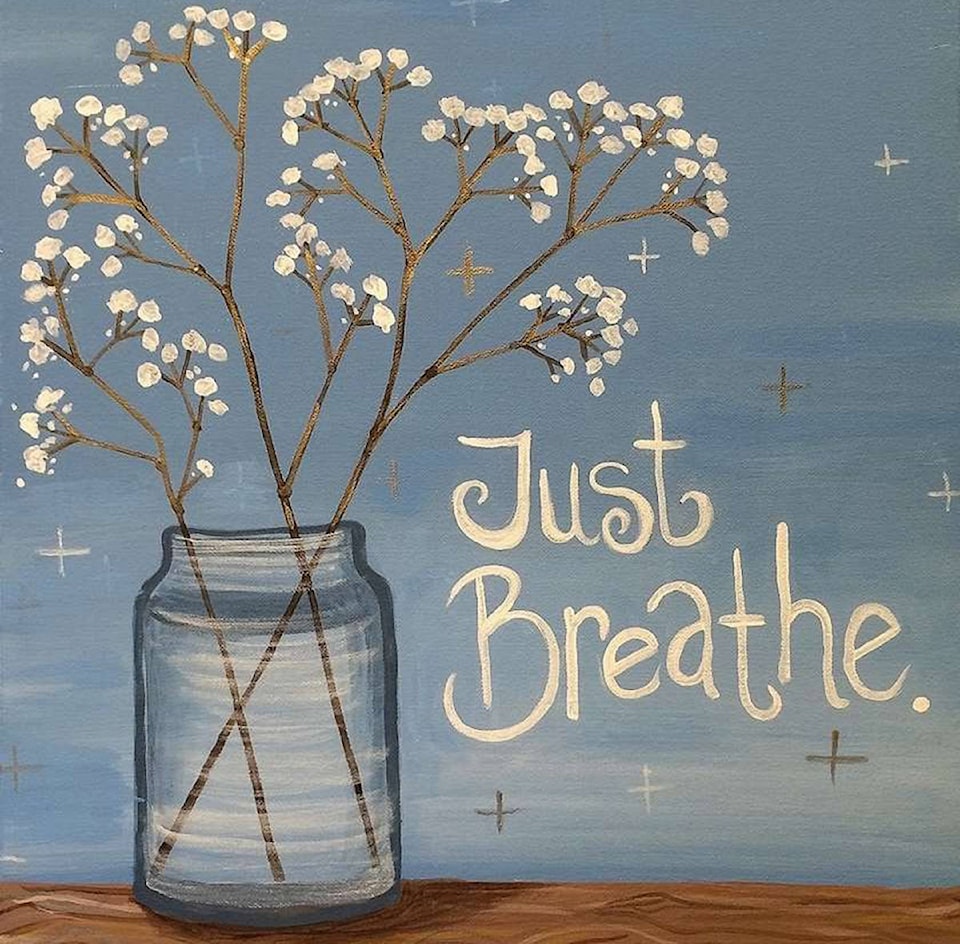“Just breathe.” I am sure we have all heard that before! As I was growing up and when I became a parent I heard and now find myself saying just breathe a lot.
When I started in the health and fitness profession I didn’t fully understand just how important breathing was. We are trained to teach people to inhale to prepare for a lift and exhale on force. The breath is viewed as a way to increase performance and not a lot more thought is put into it other than we need breath for life.
During my yoga training, with Kavita Maharaj, I dove deeper into the science behind breathing. Simple actions like the inhale and exhale are often taken for granted. We have all at one point felt overwhelmed. I can remember a few times in my life where I would hear my mother’s voice reminding me to just breathe and in just a few breaths I would feel more relaxed and a sense of calm would wash over me. At that time, I didn’t know about the parasympathetic and sympathetic nervous system, nor did I know about paradoxical breathing. It wasn’t until I took a course on Pranayama that I learned the science behind the inhale and the exhale.
“Pranayama is the fourth limb of Patanjali’s Ashtanga yoga path. Loosely translated in the West as breathing exercises, the Sanskrit word pranayama comprises of two root words: ‘Prana’ and ‘Ayama’. Prana is the vital life-force of the body while Ayama means extending. Thus, the practice of Pranayama is the extending of the life force energy within the body leading to vitality and longevity within the physical form.” The Path of Pranayama ~Kavita Maharaj
Paradoxical breathing is known simply as chest breathing. This means that when you inhale you do not take in a full breath. You only allow air into the chest cavity which keeps the diaphragm, the muscle responsible for 75 per cent of the work of respiration, from fully contracting and dropping down into the abdominal cavity. Instead, the diaphragm is sucked up and your chest and upper back rise. When you breathe paradoxically it sends the message to your sympathetic nervous system that you are in a state of stress. Your sympathetic nervous system is your ‘fight or flight response system’. It allows your body to respond to situations of stress. Each person has their own stress threshold, however we can train our bodies to increase this threshold. An increased threshold allows us to better respond to stress when it occurs.
The parasympathetic nervous system is responsible for bringing our bodies back into a state of balance. It responds to the sympathetic nervous system and triggers the necessary responses to combat the state of stress, thus it can be referred to as the ‘rest and response system’. When you breathe fully it allows your diaphragm to drop down into the abdominal cavity, therefore activating your parasympathetic nervous system. This is why the old saying “just breathe” is as relevant as it is. The parasympathetic nervous system tells our bodies to relax and rejuvenate, decreasing the level of stress within ourselves and increasing our stress threshold.
Core strength is extremely important for a pain free life. The majority of back ache is due to poor core strength. Poor core activation also increases muscle tension within our bodies. Our core muscles protect our primary skeleton and should be responsible for holding most of our body weight up.
Unfortunately, when they are not doing their job, other muscles in our bodies take over causing muscle imbalance and eventually pain. Learning to breathe fully is one of the simplest ways to strengthen our core muscles by activating them. We have to breathe in order to remain alive, therefore it only makes sense to be breathing deeply, toning and activating your core muscles each time.
A great beginner breathing exercise is the Abdominal breath. This breath exercise teaches us how to take a full breath triggering our parasympathetic system and increasing our ability to manage and handle stress.
Before you practice, find a quiet, comfortable place to sit. Start by watching how you normally breathe. Don’t judge it or try to control your breath when you first sit to start this exercise. Simply watch and bring your awareness to your breath. Then try to deepen your inhale by drawing air deep into the lower belly through your nose allowing your abdominal walls and lower back to expand. Inhale for a count of six. On the exhale focus on contracting the abdominal muscles and lower back. Lengthen the exhale for a count of six allowing the breath to flow out through your nose.
When you first start practicing any breathing exercise you may find it challenging. I know I did. It is perfectly normal and expected but if you keep practicing even just a few minutes each day you will eventually start to see results and it will become easier and easier to extend your practice time. It is my hope the next time you hear that old saying “Just Breathe” you will smile because you are enjoying the benefits of regularly doing so.
(Chemainus resident Nicole Cournoyer is a BCRPA certified Personal Trainer, Group Fitness Instructor and RYT 200 level Yoga Teacher).
